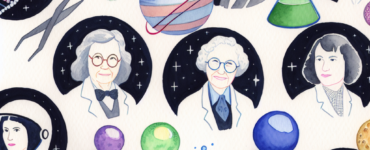Have you ever heard of Bayard Rustin? Despite his pivotal role in American civil rights history, his name is not as widely recognized as those of Martin Luther King Jr. or Rosa Parks1. Yet, Rustin was the unsung architect behind the iconic 1963 March on Washington for Jobs and Freedom, where King delivered his famous “I Have a Dream” speech.
Bayard Rustin was a civil rights activist, a master strategist, and an advocate for nonviolent protest. Born in 1912, Rustin’s early involvement in activism was shaped by his Quaker upbringing, which instilled in him a strong belief in peace and social equality. Throughout his life, Rustin fought not only for African American rights but also for the rights of workers, and he was an early advocate for gay rights2.
Perhaps most notably, Rustin was the chief organizer of the 1963 March on Washington, one of the largest and most successful rallies for human rights in United States history. Despite facing discrimination as an openly gay black man, Rustin’s organizational genius was undeniable. He was instrumental in planning the logistics of the march, handling everything from buses and trains to ensure participants’ safe arrival, to managing the sound system for the speakers. Rustin’s efforts culminated in a peaceful gathering of approximately 250,000 people at the Lincoln Memorial, making a profound impact on the nation’s conscience3.
However, Rustin’s path wasn’t without challenges. His open homosexuality, at a time when it was significantly stigmatized, and his previous affiliations with communist groups, caused him to remain largely in the background. It was feared that his presence could be used to discredit the civil rights movement. Despite these obstacles, Rustin continued to work tirelessly behind the scenes, influencing major civil rights actions and advising Martin Luther King Jr.4.
Rustin’s legacy is a testament to the power of unwavering commitment to justice and equality5. His life reminds us that the fight for civil rights required the dedication and hard work of many individuals, including those whose contributions were not always recognized. Bayard Rustin’s story, though less known, is an essential part of that narrative.
“We need in every community a group of angelic troublemakers,” Bayard Rustin once said. His life exemplified this belief, teaching us that courage and tenacity can help overcome immense obstacles and bring about change. His role as the architect of the March on Washington demonstrates the impact one individual’s behind-the-scenes work can have on history6. Let’s remember and honor the legacy of Bayard Rustin, an unsung hero of the civil rights movement.
- https://www.npr.org/2023/11/18/1174668768/bayard-rustin-march-on-washington [↩]
- https://freedomhouse.org/article/bayard-rustin-and-struggle-equality [↩]
- https://kinginstitute.stanford.edu/encyclopedia/rustin-bayard [↩]
- https://nmaahc.si.edu/bayard-rustin [↩]
- https://legacyprojectchicago.org/person/bayard-rustin [↩]
- https://littlebeebooks.com/books/unstoppable-how-bayard-rustin-organized-the-1963-march-on-washington/ [↩]








































Add comment